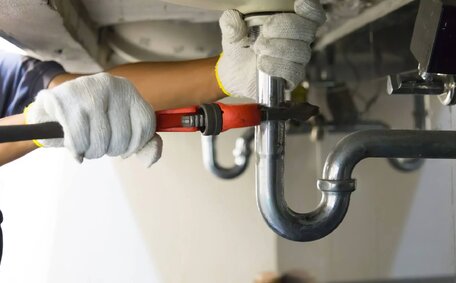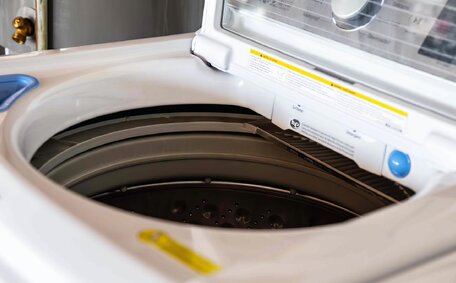Understanding Your Hot Water System
Water heaters are essential appliances in most Australian homes. The two main types are storage tanks and continuous flow systems. The continuous flow system instantly heats water as it passes through the unit.
Storage tanks heat and store hot water, insulated from the cold water, ready for use.
Proper thermostat management of your hot water system is crucial for energy efficiency and safety. Optimal thermostat settings can reduce energy consumption and costs by only heating water as needed. Conversely, excessively low temperatures can encourage bacterial growth, posing health risks.
Furthermore, overly high temperatures elevate the scalding hazard.
Aim for a thermostat setting between 50 to 60 degrees Celsius, balancing safety with energy efficiency. This provides comfortably hot water for tasks like showering, while optimising savings. Regular servicing and sediment draining are also crucial to maintain system efficiency.
Storage vs Continuous Flow Systems
Storage systems require a minimum temperature of 60°C to prevent bacteria growth in the tank. Thermostat settings above 60°C for storage systems lead to unnecessary heat and energy loss. Continuous flow heaters instantly heat water on demand, so can operate efficiently at a lower 50°C maximum.
Other tips for storage tank temperature regulation include:
- Insulate pipes and tanks to minimise standby heat loss
- Set to 60°C and utilise a tempering valve if risk of scalding is a concern
- Consider lowering the temperature to 50°C during warmer months to reduce bacterial growth risk.
For a continuous flow system, operating at the 50°C maximum provides optimal efficiency for maintaining the temperature of your water supply. This lower temperature saves energy without compromising comfort or safety.
Recommended Temperature Settings
For peak efficiency, safety, and comfort, set your hot water system temperatures as follows:
- Storage tanks: 60°C minimum to prevent bacteria growth. Up to 70°C if using a tempering valve.
- Continuous flow: 50°C maximum. This lower temperature can efficiently reduce the energy consumption of your hot water system while maintaining safety.
Storage tanks set at 60-70°C deliver hot water safely and prevent bacteria, but exceeding 70°C causes significant heat loss and spikes in energy bills.
Other efficiency tips for your water system include:
- Insulate tanks and pipes
- Install low-flow showerheads and tapware
- Service your system annually
- Drain sediment as required
Optimising your water heater’s temperature to around 60°C for storage tanks and 50°C for continuous flow systems enhances safety and offers cost savings.
Adjusting the Thermostat
Adjusting the temperature on your water system’s thermostat is simple, but should be done carefully to avoid safety risks or energy inefficiencies.
- Locate the access panel for your hot water system. Refer to the manufacturer’s manual if unsure.
- You can adjust the temperature to 60°C for storage tanks or 50°C maximum for continuous flow systems. Use the control dials, buttons or display panel to adjust.
- If your system is gas electric, ensure you switch off the power at the isolator switch before adjusting the thermostat.
- Open the relief valve to release pressure before adjusting gas system thermostats.
- Refer to the manufacturer’s guidelines for step-by-step instructions specific to your model.
- Replace the access panel securely when finished.
Caution: Improper thermostat settings can lead to energy and financial waste. Always adhere to recommended temperatures. Set to the recommended temperatures and maintain properly with regular servicing.
DIY vs Professional Adjustment
Adjusting your hot water system’s thermostat is something you can do yourself if you feel capable and adhere to safety precautions. In certain cases, it’s best to engage a professional, even if you feel you might be able to manage the adjustment yourself.
Signs you may need a plumber to service and adjust your system include:
- You’re unsure of the make, model or type of your system
- The access panel or controls are difficult to interpret or reach
- It’s an old system and due for general maintenance
- Temperatures appear too high or low but you can’t adjust sufficiently
If you require professional thermostat adjustment or hot water system servicing, contact the expert team at Carlingford Plumbing on 1300 349 338. Our fully qualified and experienced plumbers can quickly diagnose issues, drain tanks, replace parts, clean, disinfect and adjust your system to optimum efficiency.
Maintaining Optimal Efficiency
Consistent maintenance significantly mitigates problems, guaranteeing efficient and safe operation of your hot water system.
For storage tanks, Service the system biennially for optimal performance. This involves inspecting valves, anodes and insulation, flushing sediment, replacing parts as needed and testing/adjusting thermostat temperatures.
Continuous flow systems also require 2-yearly servicing to clean filters, check gas pressure/connections and ensure optimal function.
Every 6 months you should:
- Test the temperature and pressure relief valve by lifting the lever. Water should discharge once lever is released.
- Check insulation on pipes and tanks. Top up lagging if degraded.
- Monitor efficiency by noting if rising energy bills suggest potential issues.
Well-maintained hot water systems, with energy-efficient practices, such as thermostats set to recommended temperatures, provide happily hot water while maximising savings.
Insulating Pipes and Tanks
Wrapping your hot water pipes and storage tank in insulation is a cost-effective method to amplify the energy efficiency of your hot system. Bare pipes and tanks lose substantial amounts of heat, wasting energy and money.
Focus insulation efforts on the first 1-2 metres of hot water pipes from your system. These areas lose the most heat. Select high-quality insulation materials that withstand temperatures up to 100 degrees Celsius.
- Thoroughly clean pipes and connections
- Measure and cut lagging to size
- Seal edges with insulation tape
- Ensure access to valves and components that may need regular servicing.
Insulating a poorly insulated 150-liter electric storage tank can lead to substantial energy savings, potentially up to $100 yearly. Insulating pipes can reduce heat loss by up to 90%. Savings depend on factors like system type and household usage.
Insulation extends the life of your hot water system by preventing it from system running higher than necessary, which reduces pipe corrosion and limescale accumulation. Combined with an adjusted thermostat and relief valve checks, it optimises efficiency.
For further tips or professional insulation services, contact our team at Carlingford Plumbing on 1300 349 338.
Servicing and Maintenance
Consistent servicing is essential for maintaining the efficient and safe operation of your hot water system.
It’s recommended that storage tank systems be serviced by a professional every 2 years. This comprehensive service includes:
- Inspecting valves, anodes and insulation
- Flushing sediment from the tank
- Replacing any worn parts
- Testing and adjusting thermostat
Continuous flow systems also require 2-yearly servicing. This involves cleaning filters, checking gas pressure and connections, and testing water flow and temperature.
In addition to biennial services, conduct maintenance checks every 6 months:
- Test temperature and pressure relief valve
- Inspect condition of insulation on tanks and pipes
- Monitor bills for abnormal increases indicating an issue
Preventative maintenance maximises system lifespan, efficiency and safety. Adjusting your thermostat and upgrading insulation further optimises energy savings and comfort.
For professional servicing, repairs or thermostat adjustments, contact our team at Carlingford Plumbing on 1300 349 338.
Installing Water Saving Features
Incorporating water-saving devices significantly enhances your hot water system’s efficiency. Low-flow showerheads and tapware use less water, reducing the energy your hot water heating needs.
Replacing a regular showerhead with a 3 star-rated water efficient model can conserve energy in your showers, This could translate to an estimated $100 in annual energy bill savings. Adding aerators to taps additionally curbs hot water use, magnifying energy conservation.
Additional water saving practices encompass:
- Fixing leaks
- Insulating pipes
- Taking shorter showers
- Operate dishwashers and laundry machines only with full loads, conserving energy by not heating excess water.
Dialling back water consumption can save a considerable amount of energy in your hot water system as it won’t have to labor as hard or heat an excessive amount of water. Such actions directly lead to decreased energy consumption and lower bills. Combined with an adjusted thermostat temperature and regular maintenance, water saving fixtures optimise efficiency.
For advice selecting suitable low-flow products or leak repairs, contact our team at Carlingford Plumbing on 1300 349 338.
Knowing When to Upgrade Your System
After around 10 years of use, most water heaters start showing signs of wear and inefficiency. Upgrading an ageing or failing system to a more modern, energy-efficient model can optimise hot water comfort, safety and running costs.
Indications your hot water system may need replacing include:
- Frequent breakdowns and costly repairs
- Rust accumulation on tanks and pipes
- Noisy operation or rumbling sounds
- Leaking tanks, valves or connections
- Low hot water pressure or insufficient hot water delivery
- Thermostat difficulties maintaining stable temperatures
- Significantly increased energy bills despite less usage
Modern storage tanks and continuous flow heaters incorporate improved insulation, precise thermostats, and optimised heat exchangers. New systems often operate at 60-70% greater efficiency than models over ten years old.
Our expert plumbers can evaluate your current system and recommend replacement options tailored to your budget, usage patterns, and home’s configuration. We ensure to install only dependable, energy-efficient systems from top brands with up to 12-year warranties, keeping abreast of the latest in water heating technology.
For a hot water system assessment or upgrade advice, contact the professionals at Carlingford Plumbing on 1300 349 338.





